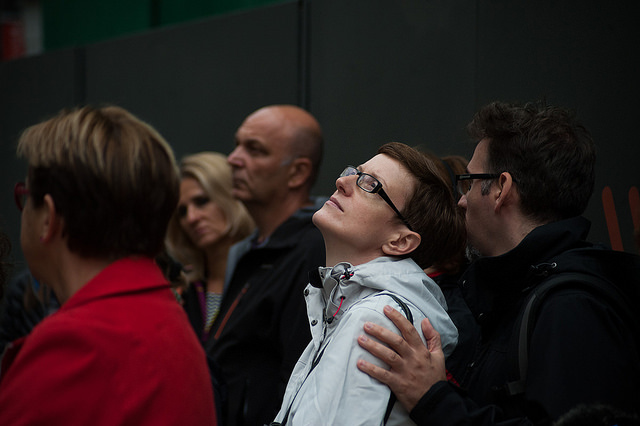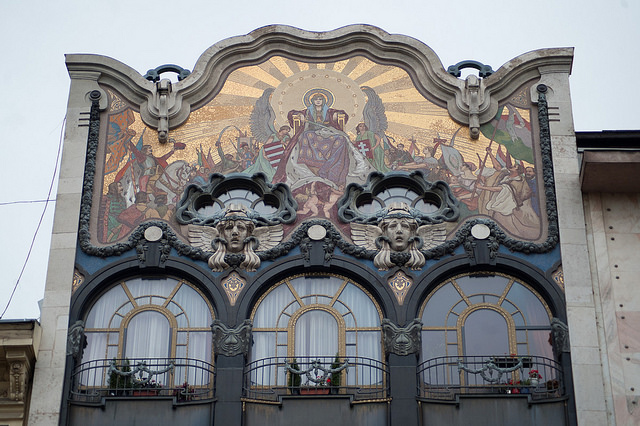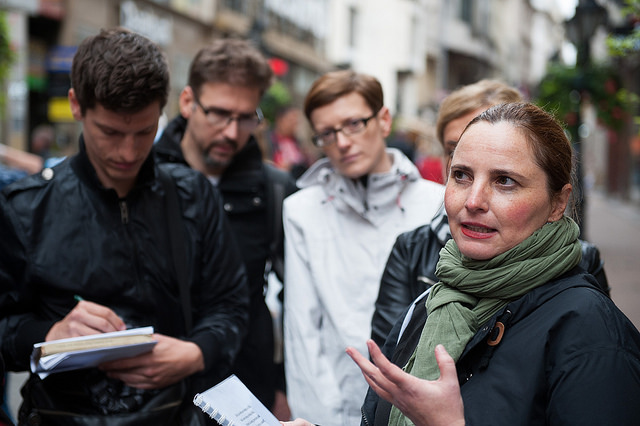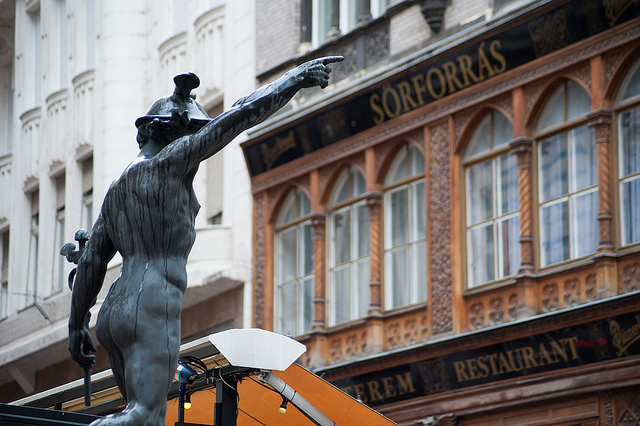Art Nouveau Fashion Walk by Budapest Walkshop
– From the fishbone corset to the bikini
By the end of the 19th century, along with a fresh worldview, a new style was also in vogue, which broke with the rigidity of historicism and transformed women’s fashion completely – along with the “attire” of a dynamically modernizing Budapest. Our fashion history walk demonstrates what the upper-middle class of Budapest was wearing – and where they shopped – in the early 20th century and throughout the interwar period. During the course of our walk, you will learn about a new shopping option that the city offered to high society: the bazaar. It was also during this period that shopping streets began to crop up in Budapest. You will become familiar with the former Ferenciek (Fransciscans’) and Király (King) Bazaar, where, while the ladies were doing their shopping, the gentleman could ease their boredom inside a miniature shooting range. We will also walk down the famous Váci Street where you can marvel at the statue of Hermes, known as the patron saint of merchants. In the courtyard of the Ferenciek Bazaar, hatmakers, tailors, shoemakers, leatherware makers, florists and various merchants set up shop. On the ground floor, a café and restaurant that is still in operation today opened its doors more than a hundred years ago. On our walk, you will have the opportunity to see numerous shops that were already open during the Art Nouveau period and still function as such today.
The cultural and social movement of Art Nouveau (or Jugendstil) significantly transformed 19th century women’s wear, which was not only uncomfortable but also unsuitable for any kind of physical activity, be it for sports or for work. The change in style that conquered Europe turned its back on medieval fashion principles, which had prescribed waist-squeezing, armour-like corsets and heaps of underskirts. As a representative of the new trend, Emilie Flöge, Gustav Klimt’s wife, began to design new underwear for the ladies of Vienna’s aristocrats in the spirit of Art Nouveau and the associated revolutionary thoughts – as well as a reinterpretation of the female body. Flöge followed the style of rational apparel for women. She was a prominent figure of the feminist movement, which also advocated for wearing dresses and underwear in this new-style.
The new fashion, albeit with a few years of delay, also arrived to Hungary, bringing never before seen challenges to the aristocracy and even the ladies of the lower middle class.
The struggle to reform women’s clothing had already begun in the mid-19th century. Some physicians – including, for instance, Frigyes Korányi – raised their voice, pointing to the negative impact corsets had on women’s health. Nonetheless, clothing designers who – in accordance with the new fashion – began to create simply-tailored, straight-cut dresses that did not require a corset or petticoat went against the public taste of the day. Having grown accustomed to seeing feminine form in a certain way, the public regarded these reformers’ clothes not only as formless and inelegant, but – without a corset – even lewd. Beauty and healthfulness were pitted against each other; a full female figure looked comical in a straight-cut reform dress and women were more interested in looking pretty than in being healthy. The new fashion not only favoured practicality but also revealed more and more of the natural female form. This meant that boldly flashed feet and petticoats – which had been covered up for decades – became the measure of feminine elegance. The female foot, in all its grace, became an elegant body part to be displayed – but only when it came to city ladies and only if it was counterbalanced with the appropriate accessory (silk stockings). The corset disappeared and women began to diet. The new female foot was slender rather than plump and skirts gradually became shorter. When Coco Chanel appeared on the scene with her garçonne style and the most daring “black dress” idea of the 20th century, she created an ideal of the working woman that was feminine and elegant. Her clothes were designed for boyish, very slender figures…




